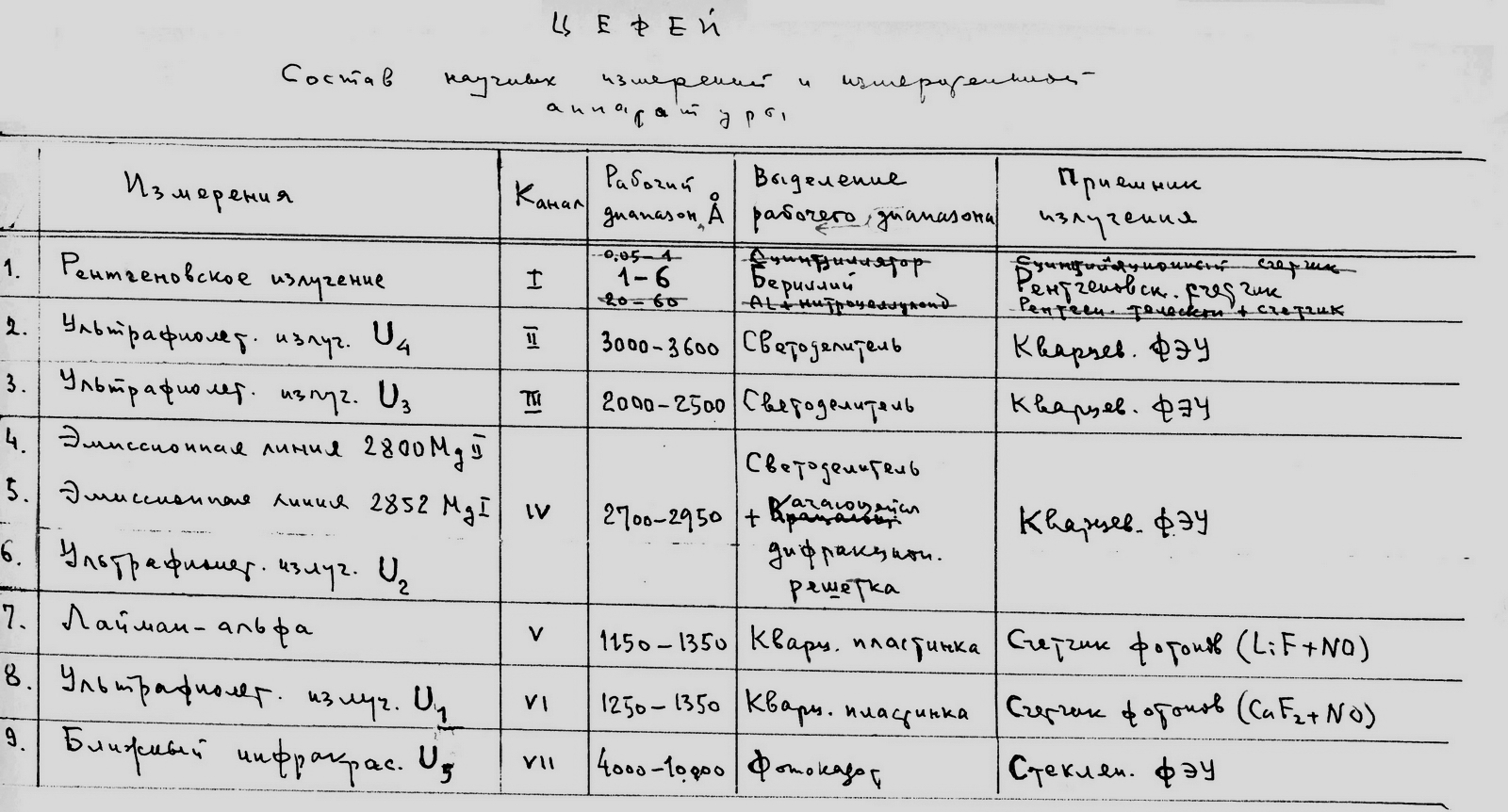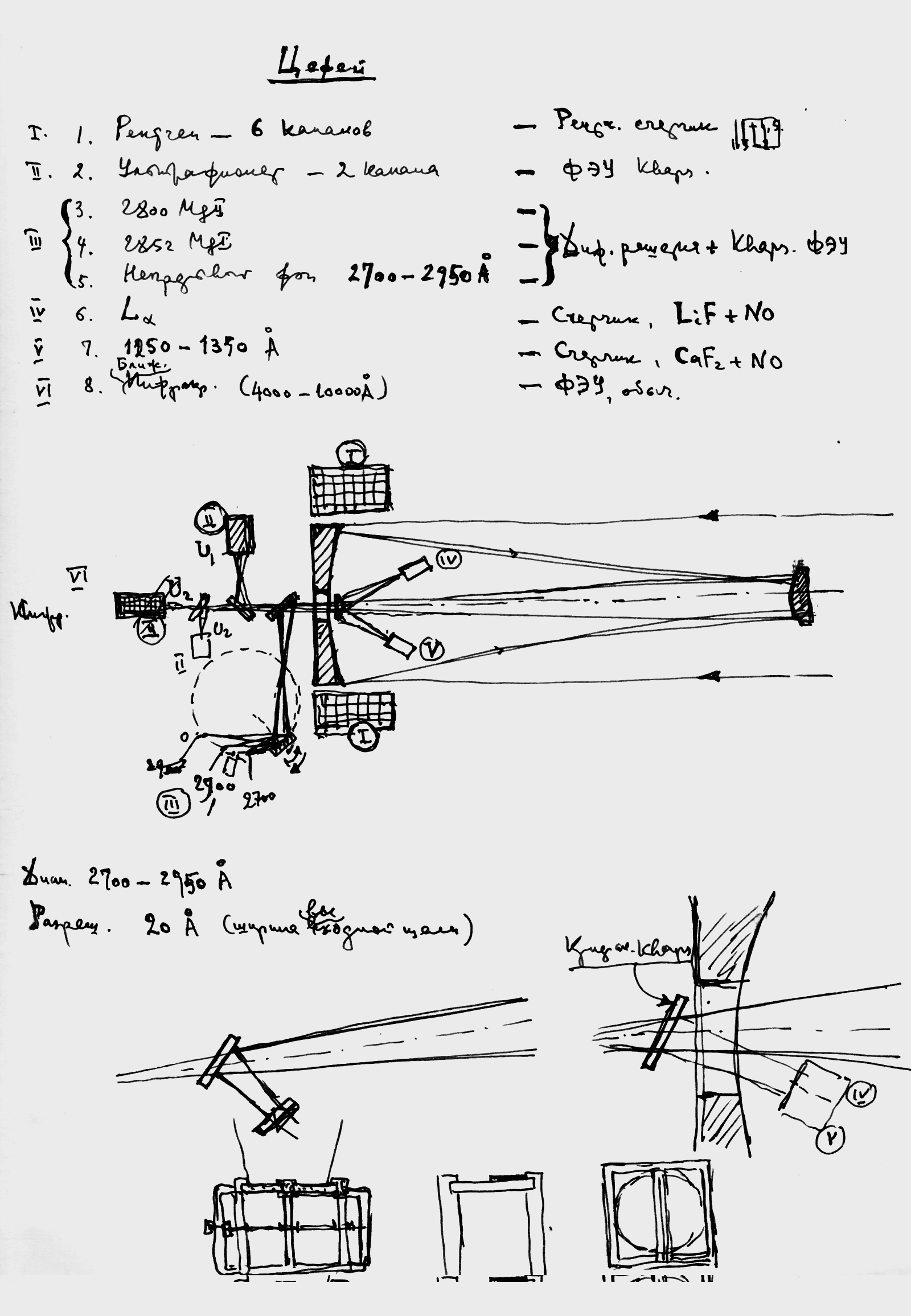Scientific supervisor – G. Gurzadyan
| |
Cepheus is an astrophysical observatory placed into orbit around the Earth to carry out long-term photoelectric measurements of flaring stars in the far ultraviolet region – U0 (3800-3100 A), U1 (3100-2500 A) and U2 (2500-1800 A), as well as X-rays. Cepheus was supposed to be a stabilized satellite, the main element of which is a telescope with a mirror with a diameter of 1000 mm and photoelectric radiation detectors, as well as an assembly of X-ray counters. The satellite is stabilized with an accuracy of one minute of arc using flywheels, and two bright stars are used as reference points. Cepheus was supposed to work only in the shadow part of the orbit, the duration of operation was about a month.
In the future, the studied part of the spectrum should have been expanded to the soft X-ray region, i.e. range shorter than 10 A.
The project of the orbital astrophysical observatory Cepheus was developed on the basis of the meteorological satellite Meteor with the maximum possible use of its on-board and ground-based test systems and units, which would significantly reduce the time required for the design, manufacture and testing of the astrophysical satellite Cepheus with minimal costs.
The implementation of the Cepheus experiment would allow solving the following problems:
- Obtaining a complete picture of the energy distribution (light curve) in the vacuum ultraviolet region, i.e. from 2000A to 3800A.
- Determination of flare amplitudes in the region of 2000-3000 A.
- Checking the presence or absence of microflares in the area of 2000-3000 A.
- Determination of flash frequency.
- Determination of the total energy released by a star during outbursts.
- Testing the possibility of X-ray emission during stellar flares.
All scientific information recorded by measuring instruments, as well as control readings
devices had to be recorded in the on-board storage system, with subsequent transfer to
Earth using radio telemetry channels during radio communication sessions.
From the draft materials of academician G. Gurzadyan on the Cepheus project:


|
|
Last Updated on 2024.12.25